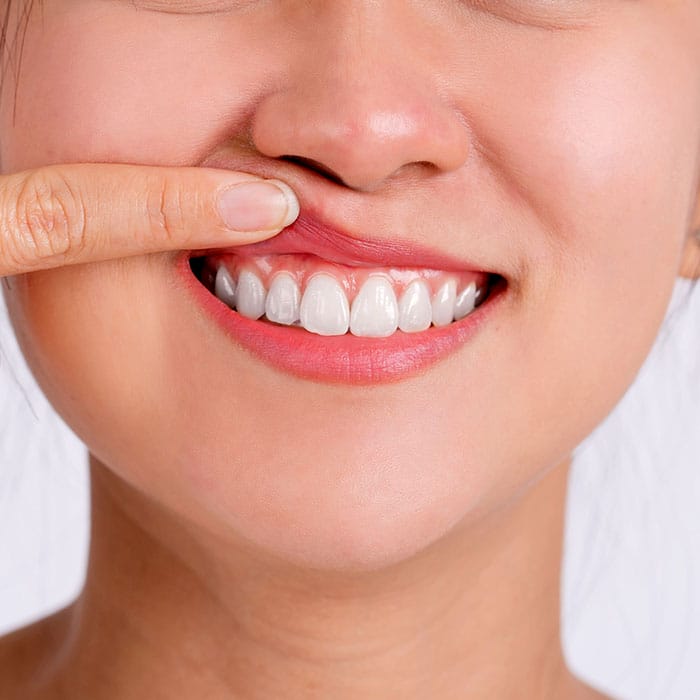FROM CLOTHING TO HAIRSTYLE to cosmetics to accessories, our personal style is how we portray who we are, and this can include piercings. However, where clothing and hairstyles are very rarely health risks (we hope), the same isn’t true of piercings. Oral piercings, specifically, pose several risks to healthy teeth and gums.

Risks of Tongue and Lip Rings
No piercing is entirely safe. Even basic earlobe piercings aren’t entirely risk-free, as they can become infected or there may be an allergic reaction to the metal. The same risks apply to oral piercings, but there are also additional ones with those.
- Damage from fidgeting: it’s difficult to resist fidgeting with any foreign object in the mouth, but doing that with a tongue or lip piercing can result in chipped or cracked teeth, damage to fillings, and injuries to the soft tissues of the gums, lips, or tongue.
- Nerve damage: tongue piercings can cause temporary or even permanent numbness in the tongue because of nerve damage, which can affect speech, chewing, and even sense of taste.
- Gum recession: a piercing can wear gum tissue away by friction, exposing the roots of the teeth and leaving them much more vulnerable to decay.
- Infection: many species of bacteria live in our mouths. We can control them with good oral hygiene, but piercings bring that bacteria much closer to the bloodstream, which can result in pain, swelling, and infection.
- X-ray trouble: piercings show up very brightly on X-rays, and they can obscure important areas, making it easier for cavities to go undetected.
- Drooling: foreign objects in the mouth stimulate the salivary glands. Piercings can trick them into working overtime, producing a lot of drool.
Oral Piercings and Braces Do Not Mix
The risks are even greater for orthodontic patients, because it doesn’t take much for a piercing to get tangled up in the orthodontic hardware. If this happens, it can damage the braces and cause injuries around the piercing site. We strongly urge orthodontic patients to wait until their treatment is over before getting an oral piercing.
How to Properly Care for an Oral Piercings
We’re not here to forbid our patients from ever getting these types of piercings. We just want to be sure they are fully informed of the risks involved. If it still seems like a good idea, it’s also important to know the ways to manage those risks. Being diligent with oral hygiene is the most obvious one, but there are others too. None are as effective as removing or never getting the piercings, but they do make a difference:
- Clean the piercing site after every meal or snack to prevent bacteria and food debris from building up.
- Remove all piercings during physical activity like sports to minimize the risk of injury.
- Check that the piercing is secure so that it can’t come loose and become a choking hazard.
- Go to the dentist at the first sign of infection, including symptoms like swelling, pain, or unusual redness, as well as chills, fever, or shaking.
- Don’t click the piercing against your teeth. Be very gentle with how you move it so that it doesn’t cause chips and cracks.
Your Oral Health Is Our Top Priority
We’re always here to help our patients maintain healthy teeth and gum. Which is why we’re not the biggest fans of oral piercings. To learn more about how a piercing can impact your oral health or how you can minimize these risks, just give us a call or drop by our practice!







